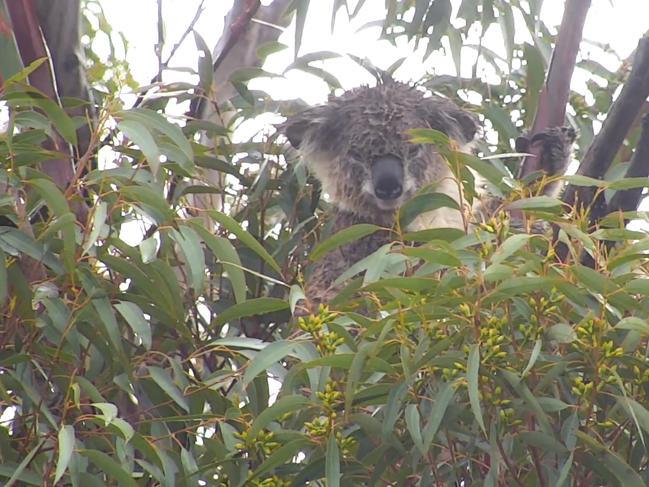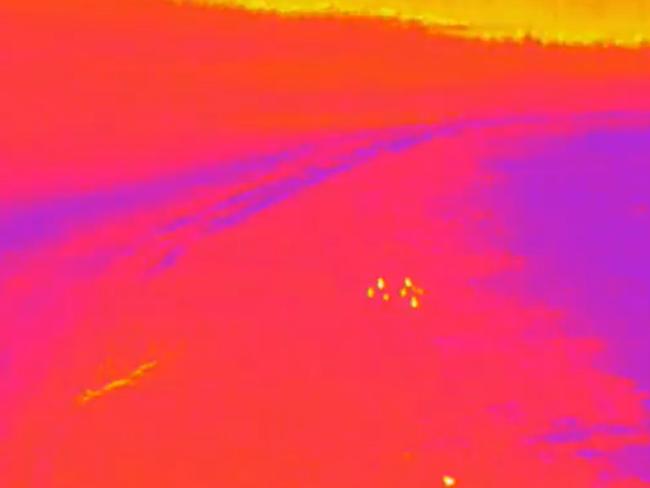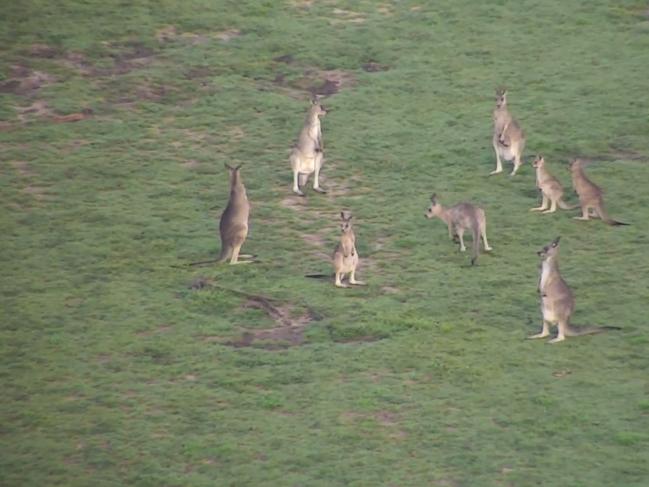Thermal drone hunts koalas and kangaroos in bushfire zones
A thermal-imaging drone is searching the State’s fire-ravaged forests for koalas and other wildlife as rescuers race the clock to save what’s left. WATCH THE VIDEO
- Outrage at veteran ineligibility for promised $250 travel
- Awkward teen to model alias: How NRL star’s ex transformed
It looks like a blob on psychedelic poster, but the pale shape is actually a koala.
The image is from a highly specialised thermal-imaging drone that has been deployed to scour fire-ravaged forests across the State for koalas and other surviving wildlife.
More than five million hectares of bushland were razed in the recent fires, and wildlife workers have been trying to save what is left with food drops and rescues.
The thermal-imaging drone, brought out by US aerial cinematographer Douglas Thron, is set to help rescue efforts by identifying individual animals in areas that are difficult to reach by foot, while guiding food drops.

Mr Thron, who has partnered with the World Wide Fund for Nature Australia (WWF), the NSW Nationals Parks and Wildlife Service and the NSW Nature Conservation Council in the rescue and recovery effort, said thermal imaging had been used to find wildlife in the Californian wildfires.
MORE BY LINDA SILMALIS:
Underground bunkers saving lives in bushfire zones
Sydney schoolgirl stranded in China after virus travel ban
However, it had only been recently that a drone with a thermal imaging camera had become available.
Able to fly just under 2km, the drone had so far identified koalas, wombats and wallabies around the Kangaroo Valley region and Shoalhaven, allowing local rescue group Wildlife Stations to feed survivors.

However, the plan was to use it to fly across critical koala habitat on the North Coast once the rain had passed, to determine the extent of the impact of the fires, he said.
“We have so far found koalas, wombats, echidnas and wallabies,” he said.
“They are either rescued or helping guide the food drops.”
While the actual impact on koala numbers is unknown, more than 24 per cent of habitat in eastern NSW was affected by fire.
WWF conservation scientist Stuart Blanch said koalas had been found in gullies and unburnt patches beside rainforest across firegrounds.

He said there was a risk they would eat out the surviving eucalypts as they waited new growth, although noted the species’ resilience.
“They are tough buggers,” Mr Blanch said.
“They are used to fire. But they are heading for extinction so having a drone that can go in to a fire zone that is unsafe for people to allow for a quicker rescue is a real advantage.”
Mr Blanch described the North Coast is part of the “koala golden triangle” where the species had its best chance of long-term survival.
He said the drone had the potential to be used along with koala detection dogs for an even faster rescue effort.

NSW Nature Conservation Council ecologist Mark Graham said up to 12,000 koalas had existed on the North Coast prior the bushfires.
While some limited areas were fire-free, other significant koala habitat such as that around Casino and Port Macquarie had been severely impacted which made protection of what was left even more pressing.

“Port Macquarie used to be the koala stronghold, but that population has been significantly reduced – probably by around 40-50 per cent – so now it is the Coffs Harbour and Bellingen region, which is 90 per cent unburnt” he said.
“In the Richmond Lowlands around Casino, there is limited evidence of survivors.
“If you reduce koala numbers below a critical mass, you enter an extinction spiral so this is why it is important that we determine where they are and protect what has now become extremely important habitat.”
Mr Graham said the thermal imaging camera would help add to the database of information being added to from camera traps.


